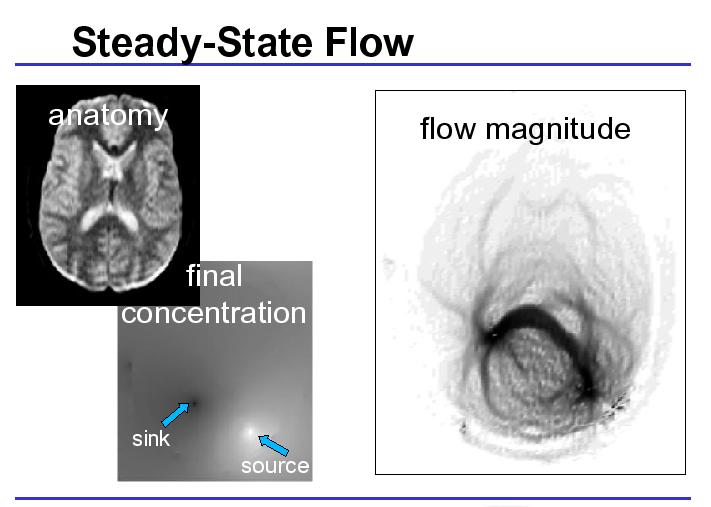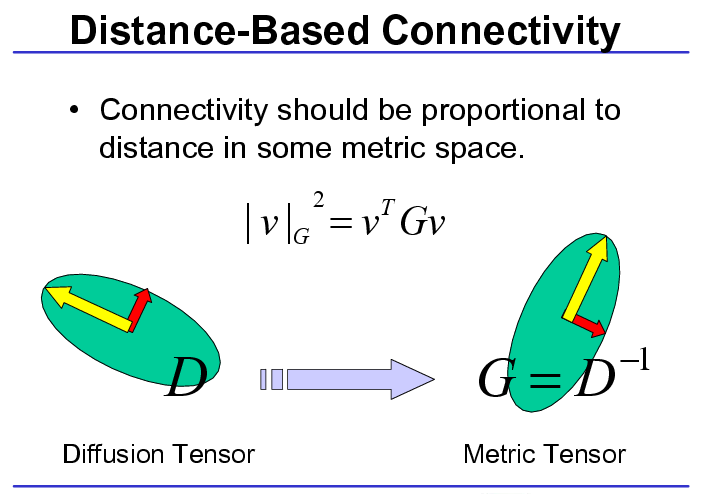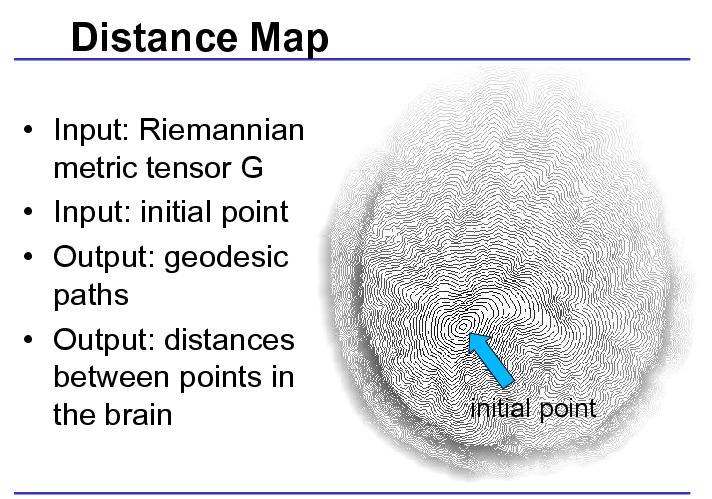New Approaches to Estimation of White Matter Connectivity
in Diffusion Tensor MRI
Abstract
In vivo patient-specific measurement of neural connections is of great
interest in neuroscience, in studies of neural pathology, and in
planning, guidance, and followup of brain surgery. Such a measurement
is a very logical higher-level interpretation of Diffusion Tensor
Magnetic Resonance Imaging (DT-MRI) data. However, it is not known how
to best quantify "connectivity," or the neural connection strength
between points and regions in the brain, based on DT-MRI data. Here
we investigate two new approaches to the measurement of white
matter connectivity in the brain. Both approaches use the
information from the whole tensor and can provide numerical measures
of connectivity.
Anatomy

Henry Gray, Anatomy of the Human Body. 1918
This image is an example from an anatomical atlas showing major fiber
tracts in the human brain. The fibers shown in this sagittal view are
association fibers, those that connect within one cerebral hemisphere.
Note the presence of both long and short paths, and varying degrees of
curvature. These factors complicate automated extraction of tracts
from diffusion MRI data.
Flow-Based Connectivity
Our first approach simulates flows. We find a steady-state
concentration and flow at each point using the three-dimensional
tensor field as diffusion tensors. The steady-state flow along any
path reflects connectivity. Below you see strong flow along the corpus
callosum.

Distance-Based Connectivity
Our second approach casts the problem in a Riemannian framework,
deriving from each tensor a local warping of space, and finding
geodesic paths in the space. In this method, path lengths are related
to connectivity.


Publications
Lauren O'Donnell, Steven Haker, and Carl-Fredrik Westin.
New Approaches to Estimation of White Matter Connectivity in
Diffusion Tensor MRI: Elliptic PDEs and Geodesics in a
Tensor-Warped Space.
Fifth International Conference on Medical Image Computing and
Computer-Assisted Intervention - MICCAI'02, LNCS 2488, 459-466,
2002.

Researchers
Back to the Medical Vision Group page.




